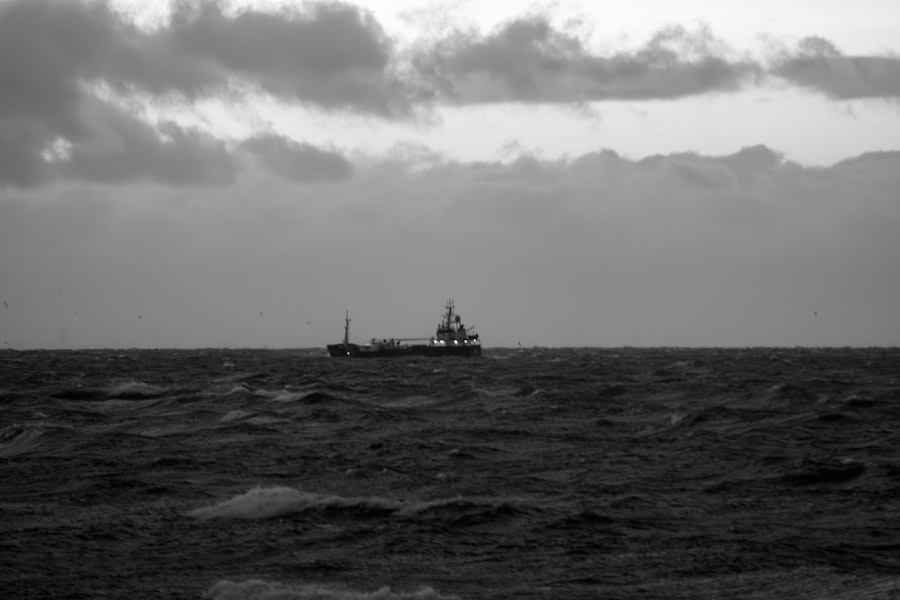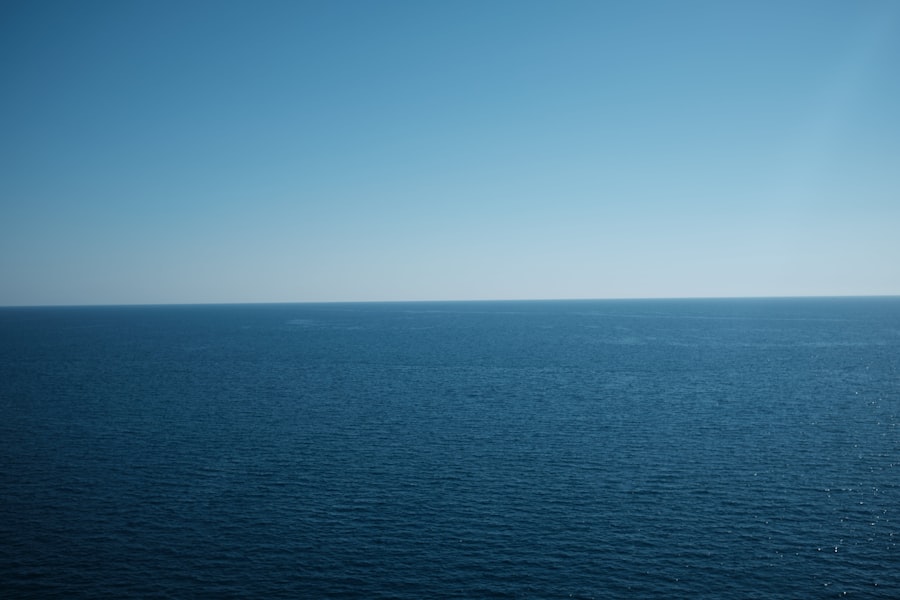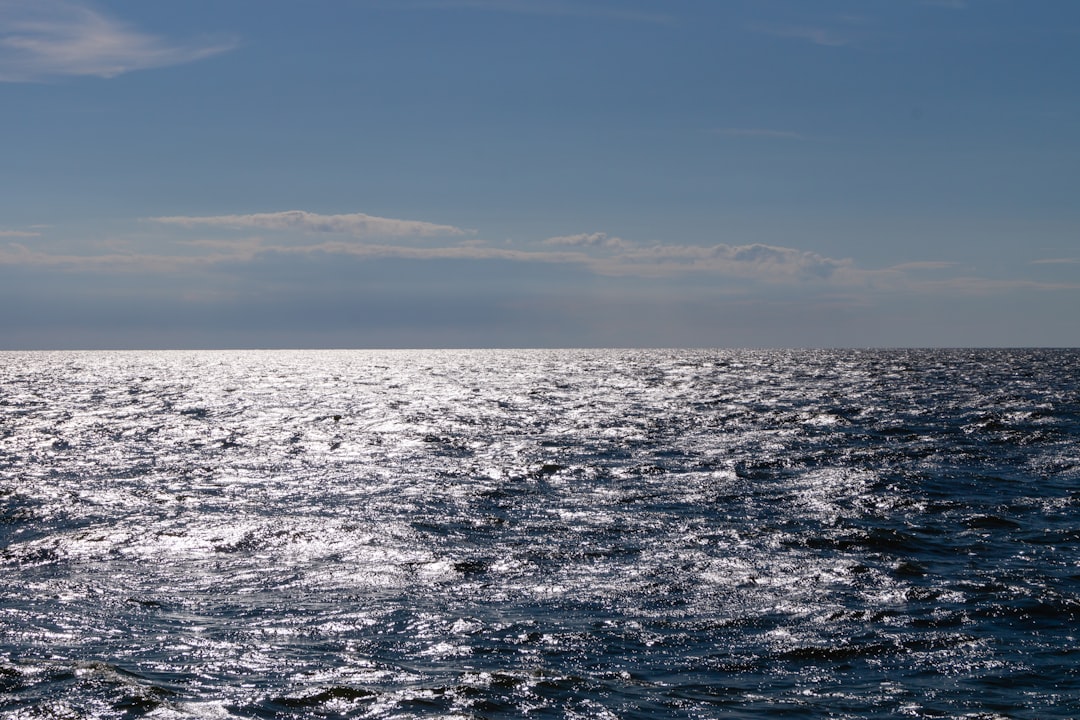Throughout history, the world’s oceans and seas have served as both barriers and highways for human exploration, trade, and conflict. Among these bodies of water, the Black Sea and the Drake Passage stand out for their unique geographic and climatic characteristics, as well as their rich marine ecosystems. The Black Sea, bordered by six countries, has been a crucial area for trade and cultural exchange since ancient times.
In contrast, the Drake Passage, located between the southern tip of South America and Antarctica, is notorious for its treacherous waters and extreme weather conditions. Both regions have played significant roles in shaping maritime history, influencing naval strategies, and presenting challenges to seafarers. The significance of these two bodies of water extends beyond their geographic boundaries.
The Black Sea has been a focal point for empires and nations vying for control over trade routes and resources. Meanwhile, the Drake Passage has become a critical route for vessels navigating between the Atlantic and Pacific Oceans, despite its reputation for perilous conditions. Understanding the geographic characteristics, climate, marine life, and historical significance of these two regions provides insight into their roles in maritime navigation and the challenges faced by those who dare to traverse their waters.
Key Takeaways
- The Battle of the Seas is a comparison of the geographic characteristics, climate and weather conditions, marine life and ecosystems, historical significance, and challenges of navigating the Black Sea and the Drake Passage.
- The Black Sea is a landlocked sea bordered by six countries, with a maximum depth of 2,212 meters and a unique ecosystem due to its isolation from the world’s oceans.
- The Drake Passage is a narrow body of water between South America’s Cape Horn and the South Shetland Islands of Antarctica, known for its strong winds and currents, and its role in connecting the Atlantic and Pacific Oceans.
- The Black Sea experiences a moderate climate with warm, wet summers and cool, dry winters, while the Drake Passage is characterized by strong winds, rough seas, and rapidly changing weather conditions.
- The Black Sea is home to over 2000 species of marine life, including dolphins, whales, and sturgeon, while the Drake Passage supports a diverse range of seabirds, seals, and whales, and is a critical feeding ground for marine life.
Geographic Characteristics of the Black Sea
The Black Sea is a semi-enclosed body of water located in southeastern Europe, bordered by six countries: Romania, Bulgaria, Turkey, Georgia, Ukraine, and Russia. It covers an area of approximately 436,000 square kilometers and has a maximum depth of about 2,212 meters. The sea is connected to the Mediterranean through the Bosporus Strait, the Sea of Marmara, and the Dardanelles Strait.
This connection has historically made the Black Sea a vital conduit for trade and cultural exchange between Europe and Asia. The sea’s unique geography is characterized by its relatively shallow northern shelf and deeper southern basin. The northern part is rich in nutrients due to river inflows from major rivers like the Danube, Dnieper, and Don.
This nutrient-rich environment supports diverse marine life and contributes to the sea’s ecological significance. Additionally, the Black Sea’s coastline features a mix of sandy beaches, rocky cliffs, and lush vegetation, creating a picturesque landscape that attracts tourists and researchers alike.
Geographic Characteristics of the Drake Passage

In stark contrast to the Black Sea’s relatively calm waters lies the Drake Passage, a narrow body of water that separates South America from Antarctica. Spanning approximately 800 kilometers in width, it is known for its turbulent seas and unpredictable weather patterns. The passage connects the Atlantic Ocean to the Pacific Ocean and serves as a critical route for vessels navigating between these two vast bodies of water.
The geographic features of the Drake Passage contribute to its reputation as one of the most challenging maritime routes in the world. The convergence of ocean currents from both the Atlantic and Pacific Oceans creates powerful waves and strong winds that can reach up to 40 knots. The passage is also characterized by its deep waters, with depths exceeding 5,000 meters in some areas.
This combination of factors makes navigation through the Drake Passage a daunting task for even the most experienced mariners.
Climate and Weather Conditions in the Black Sea
| Climate and Weather Conditions in the Black Sea | |
|---|---|
| Average Temperature | 12°C |
| Annual Precipitation | 500-800 mm |
| Humidity | 70-80% |
| Wind Speed | 10-20 km/h |
The climate surrounding the Black Sea is predominantly temperate, with distinct seasonal variations that influence both marine life and human activities. Summers are typically warm and dry, while winters can be cold and wet. The region experiences a Mediterranean climate along its southern coast, characterized by mild winters and hot summers, while the northern areas are subject to more continental influences.
Weather conditions in the Black Sea can change rapidly due to its geographic location. Storms can develop quickly, particularly during transitional seasons like spring and autumn. These storms can bring heavy rainfall and strong winds that pose challenges for navigation.
Additionally, fog is common in certain areas of the sea, further complicating maritime travel. Despite these challenges, the Black Sea’s climate supports a rich diversity of marine ecosystems that thrive in its waters.
Climate and Weather Conditions in the Drake Passage
The climate in the Drake Passage is notoriously harsh and unpredictable. It is influenced by its proximity to Antarctica and the Southern Ocean, resulting in cold temperatures year-round. The region experiences frequent storms and high winds, making it one of the most tempestuous maritime areas on Earth.
Average temperatures can range from -2°C in winter to 10°C in summer, but conditions can vary dramatically within short periods. The weather patterns in the Drake Passage are heavily influenced by the confluence of ocean currents from both the Atlantic and Pacific Oceans. This interaction creates turbulent seas with waves that can reach heights of over 15 meters during storms.
Mariners navigating this passage must be prepared for sudden changes in weather conditions, including fierce gales and heavy precipitation. The combination of cold temperatures and rough seas makes sailing through the Drake Passage a formidable challenge that requires skill and experience.
Marine Life and Ecosystems in the Black Sea

The Black Sea is home to a diverse array of marine life that thrives in its unique ecosystem. The nutrient-rich waters support various species of fish, including anchovies, sprats, and mullets, which are vital for both commercial fishing and local diets. The sea’s ecosystem also includes numerous species of mollusks, crustaceans, and marine mammals such as dolphins and seals.
One of the most notable features of the Black Sea’s ecosystem is its stratification due to varying salinity levels. The upper layer is less saline and supports a vibrant community of phytoplankton that forms the base of the food web. Below this layer lies a more saline environment that is less hospitable to most marine life but contains unique species adapted to these conditions.
This stratification creates a complex ecosystem that plays a crucial role in maintaining biodiversity within the region.
Marine Life and Ecosystems in the Drake Passage
In contrast to the Black Sea’s diverse marine life, the Drake Passage hosts a unique array of species adapted to its cold waters and harsh conditions. The passage serves as a critical habitat for various marine mammals, including whales such as humpbacks and orcas that migrate through these waters during feeding seasons. Additionally, seals are commonly found resting on ice floes or swimming in search of food.
The nutrient-rich waters of the Drake Passage support an abundance of krill, which serves as a primary food source for many marine species. This small crustacean plays a vital role in the Southern Ocean’s food web, supporting not only whales but also seabirds such as albatrosses and petrels that thrive in this region. The unique ecosystems found within the Drake Passage highlight its importance as a critical area for marine biodiversity.
Historical Significance of the Black Sea
The historical significance of the Black Sea cannot be overstated; it has been a crossroads for civilizations for millennia. Ancient Greeks established colonies along its shores as early as the 7th century BCE, recognizing its strategic importance for trade routes connecting Europe with Asia. Over time, various empires—including the Roman, Byzantine, Ottoman, and Russian—sought control over this vital body of water due to its economic potential.
Throughout history, conflicts have erupted over control of trade routes across the Black Sea. The Crimean War (1853-1856) exemplifies this struggle as Russia sought dominance over this region against an alliance of Britain, France, Sardinia, and the Ottoman Empire. The Black Sea has also played a significant role during both World Wars as nations sought naval supremacy in this strategic area.
Its historical importance continues to resonate today as geopolitical tensions persist among bordering nations.
Historical Significance of the Drake Passage
The Drake Passage holds its own historical significance as a key maritime route that has shaped exploration and trade between continents. Named after Sir Francis Drake, who navigated these treacherous waters in the late 16th century during his circumnavigation of the globe, this passage has long been recognized for its challenges and opportunities alike. During the Age of Exploration, sailors sought new trade routes to Asia by navigating through this passage despite its dangers.
The passage became essential for whalers seeking lucrative hunting grounds around Antarctica in the 19th century. Today, it remains vital for modern shipping routes connecting global markets while also serving as an important area for scientific research related to climate change and marine ecosystems.
Challenges and Dangers of Navigating the Black Sea
Navigating the Black Sea presents numerous challenges due to its complex geography and unpredictable weather patterns. The presence of shallow areas near river mouths can pose hazards for larger vessels that may run aground if not carefully monitored.
Storms can develop rapidly in this region; strong winds can create dangerous waves that threaten smaller boats or unprepared vessels caught at sea. Furthermore, geopolitical tensions among bordering nations can lead to increased risks for commercial shipping operations or recreational boating activities within contested waters.
Challenges and Dangers of Navigating the Drake Passage
The Drake Passage is infamous among sailors for its extreme weather conditions and rough seas that pose significant challenges to navigation. The convergence of powerful ocean currents creates unpredictable waves that can reach staggering heights; even experienced mariners must exercise caution when traversing this passage. In addition to turbulent waters caused by storms or high winds, icebergs present another danger for vessels navigating through these frigid waters—especially during winter months when ice floes are more prevalent.
Navigators must remain vigilant while monitoring weather forecasts closely; failure to do so could result in catastrophic consequences for those attempting to cross this perilous maritime route. In conclusion, both the Black Sea and Drake Passage are remarkable bodies of water with rich histories shaped by their geographic characteristics, climatic conditions, marine ecosystems, historical significance, and navigational challenges. Understanding these elements provides valuable insight into their roles within global maritime history while highlighting ongoing issues faced by those who navigate these treacherous waters today.
While the Black Sea is known for its unique anoxic waters and rich biodiversity, the Drake Passage is famous for its turbulent waters and as a critical gateway for ocean currents between the Atlantic and Pacific Oceans. For those interested in exploring more about these fascinating regions, a related article can be found on MyGeoQuest. This article delves into the geographical and environmental significance of these areas, providing a comprehensive understanding of their impact on global ecosystems. You can read more about it by visiting this page.
WATCH NOW! Drake Passage: Earth’s Deadliest Waters Revealed
FAQs
What are the Black Sea and Drake Passage?
The Black Sea is an inland sea located between southeastern Europe and Asia Minor, connected to the Mediterranean Sea through the Bosporus Strait. The Drake Passage is the body of water between the southern tip of South America and the northern tip of the Antarctic Peninsula, connecting the Atlantic and Pacific Oceans.
What are the main differences between the Black Sea and Drake Passage?
The Black Sea is a relatively small, shallow, and enclosed body of water, while the Drake Passage is a much larger, deeper, and open ocean passage. The Black Sea has a more temperate climate, while the Drake Passage is known for its harsh and unpredictable weather conditions.
What are the major similarities between the Black Sea and Drake Passage?
Both the Black Sea and Drake Passage are important waterways for maritime trade and transportation. They also have significant ecological importance, supporting diverse marine life and ecosystems.
What are the main challenges associated with navigating the Black Sea and Drake Passage?
The Black Sea is known for its limited depth and numerous underwater hazards, while the Drake Passage is notorious for its strong winds, high waves, and potential for extreme weather conditions. Navigating both waterways requires careful planning and consideration of these challenges.
What are some key points of interest in the Black Sea and Drake Passage?
The Black Sea is known for its historical significance, with numerous ancient civilizations and archaeological sites along its shores. The Drake Passage is famous for its rich marine biodiversity, including whales, seals, and seabirds, making it a popular destination for wildlife enthusiasts and researchers.
